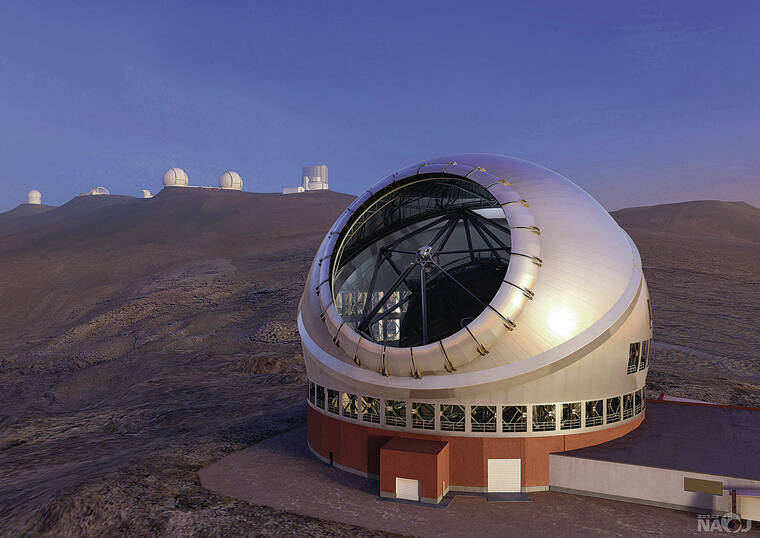National Science Foundation to discuss possible funding for TMT

COURTESY NATIONAL ASTRONOMICAL OBSERVATORY OF JAPAN
An artist’s rendering shows the Thirty Meter Telescope against a backdrop of other Mauna Kea telescopes.
A federal agency will conduct an external review of the Thirty Meter Telescope project to determine whether the observatory will receive federal funding.
The board of the National Science Foundation met Wednesday and Thursday and discussed a process to decide which major telescope project, if any, the foundation should fund.
While the National Academy of Sciences recommended in 2020 that the NSF invest in an “Extremely Large Telescope Project” that would include the development of both the TMT on Maunakea and the Giant Magellan Telescope in Chile, the NSF board recommended in February that the agency not spend more than $1.6 billion on the full ELT project.
With such a spending limit in place, it became clear after that announcement that NSF would have to choose between funding one telescope or another.
NSF Director Sethuraman Panchanathan said at the Thursday board meeting that the agency has had discussions with “many interested parties,” including the White House, about its investments into the ELT project and concluded that it will convene an external panel to review both the TMT and GMT projects.
“I want to be very clear: This is not a decision to construct any telescopes,” Panchanathan said at the meeting. “This is simply part of a process of gathering critical information to inform my decision-making on advancing either project to the final design stage.”
Don't miss out on what's happening!
Stay in touch with breaking news, as it happens, conveniently in your email inbox. It's FREE!
Panchanathan said the panel will visit with the observatories and evaluate them on a series of topics including their current progress, partnerships, risks and risk mitigation, governance, opportunities for access by early-career scientists, how well the project complements the European Southern Observatory’s Chilean Extremely Large Telescope, and public engagement.
The panel also will consider how each project will affect NSF’s current resources throughout the planning, construction and operation phases.
Panchanathan said the panel’s findings are due to the NSF board by September. However, he did not mention when NSF will make a final decision.
TMT International Observatory Executive Director Robert Kirshner issued a statement about the NSF process Friday, saying, “We thank the National Science Board and the National Science Foundation for taking steps forward in their consideration of the U.S. Extremely Large Telescope Program,” Kirshner’s statement read. “Advancing (TMT) to the final design phase would position the United States to retain its leadership position in observational astronomy, inspire the next generation of researchers, and attract top talent in math and science to our educational institutions.”



